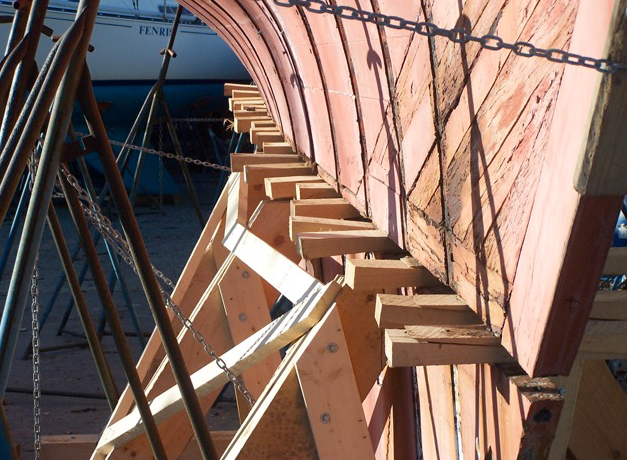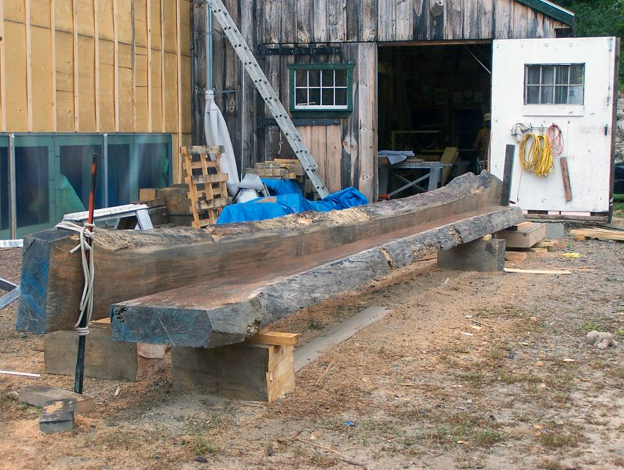Before we start a job, we develop a well-thought-out overall strategy suited to the boat’s and the customer’s needs. We strive to achieve the greatest possible increase in long-term value and usability and the greatest possible decrease in long-term maintenance costs for the money to be spent.

Controlling Costs
We make our living by selling our own skilled labor, not through profits on materials or on employee or subcontractor labor or through extensive service charges. We charge most materials and supplies at cost. (We do mark up a few special or hard-to-get materials, which we must carry in stock for long periods of time to ensure availability.)
In addition to our partners, we also employ associates at somewhat lower rates. The billed rate is an average of the partner and associate rates and in most cases we add only a small service charge to their rates to cover administrative requirements. Storage charges are usually not assessed for jobs that run continuously. We do have associated storage facilities for boats, contracted with Noank Marine Service adjacent to our shop, and we can sometimes offer customers the option of stretching out a job by working in phases. This necessarily increases overhead costs somewhat, but it also may make it possible for customers with limited yearly budgets to take on projects.
Our overhead is low because we aren’t located on the water. Boats as large as 72 feet have been trucked to our shop, and we have excellent relations with many local yards where we often perform small jobs that don’t warrant the expense of moving the boat or where we can work on vessels too large to move. In the past few years we’ve had a 47′ Herreshoff “(New York Thirty”), a 45′ S&S/Nevins (“New York Thirty-Two”), and a 72′ Herreshoff (“New York Fifty”) at our shop for major structural restorations. On large projects the hauling, launching, and moving charges are more than offset by our low labor rates and by the added efficiency of working in the shop rather than off-site.

Materials
We believe that using the best possible materials makes the most sense in the long run. In the first part of this century, two-thirds of the cost of a new boat may have been materials. In that era, the substitution of less expensive materials, even if it increased initial labor costs and later maintenance costs, could result in a significant saving to the owner, so it was worth considering. Today, however, materials represent one-third or less of the total cost of new construction or of a comprehensive structural restoration, so using lower-quality materials saves only a small fraction of the total cost of the job. These days there is little justification for using anything but the highest-quality materials.
Customer Participation
We encourage our customers to participate in their projects. On weekends, owners are frequently seen at our shop doing such tasks as painting, sanding, filling, puttying, pre-painting new parts, and preliminary fairing. Painting and finishing can consume a large proportion of a restoration budget. When owners can do some of this work it allows us to put more time into structural improvements.
